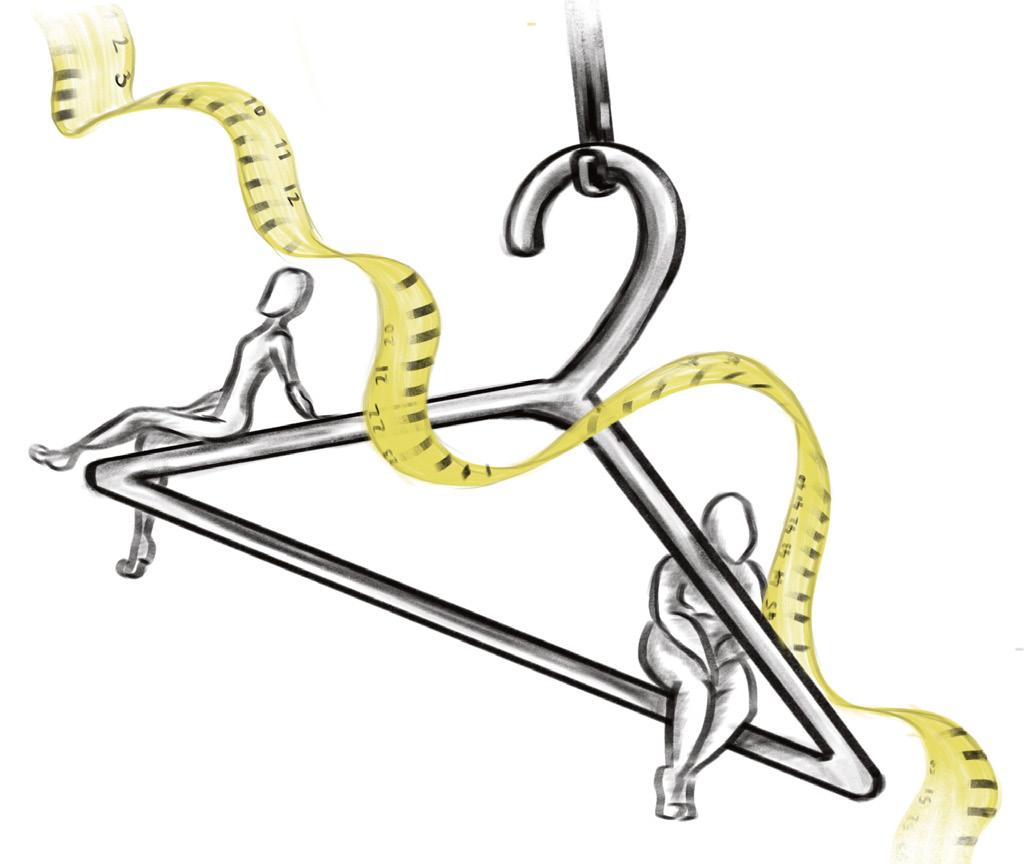
2 minute read
Every Size Needs to Be Available in Store
I Should Be Able to Be Fat and Dress Cute
Lory Saint-Fleur
As a size 16 and a twenty-oneyear-old, all I wish for is cute clothes that fit me.
While I am a fan of online shopping, how nice would it be to enter an H&M and not hunt for that one pair of jeans that I can fit into?
Many would respond to this problem by simply suggesting weight loss because of course it makes everything in life so much easier. Well here’s the big news people: I love my body the way it is.
While this might be a surprise to many people, being fat is not the worst thing that can happen to you.
Through the introduction of the body-positive movement, improvement in the fashion industry has slowly started. A few stores now have a plus-size section on their website which is often rather small, but we’ll give them a point for at least trying.
Let’s take the current H&M website for example. As of Feb. 12 at 11:47 p.m., they have 7,508 items in their catalog for women. Only 537 of those items were plus-size, which represents seven per cent of their items in the women's section.
In 2016, the International Journal of Fashion Design, Technology, and Education declared that the average woman is between a size 16 to 18. We shouldn’t have to rely so heavily on the same few brands while people size 12 and under have a million options presented to them the minute they walk into a store. It is unfair to be missing out on 93 per cent of possibilities.
Beauty standards are responsible for society’s distorted view of women’s bodies. They have controlled the way women look and want to look throughout history. We can see that western society’s ideals have shifted from skinny to fat over a few decades.
The Renaissance started in the 1300s, and it was a time of renouveau. In Europe during that time, fat women were not only the ideal but they were also a representation of wealth. Larger women were recognized as the ideal as it represented that they were part of a higher class which made them desirable brides.
In the mid 1990s, Heroin chic was introduced. While it was connected to a slouchy look with dark under eyes, it quickly converted to extremely thin models being used to represent that aesthetic. As stated in the name, the heroin chic look could be achieved through the use of hard drugs or other dangerous practices. President Clinton stated at the time: “The glorification of heroin is not creative, it’s destructive. It’s not beautiful; it’s ugly. And this is not about art; it’s about life and death.”
Following the heroin chic movement, the ideal of skinny was reinforced by the media and society. In the 2000s, there was an unapologetic culture of shaming women for their body. The fashion trends of the time ignited that culture from lowrise jeans to bandana tops. From Victoria's Secret models to celebrities' “muffin tops” being plastered on every magazine's front page, the 2000s were a personal hell for most women. Anyone higher than a size 6 was relegated to underground shops.
In 2006, Abercrombie & Fitch CEO Michael Jeffries said in an interview with salon that they “go after the attractive all-American kid with a great attitude and a lot of friends. A lot of people don’t belong [in our clothes], and they can’t belong. Are we exclusionary? Absolutely.” As Abercrombie & Fitch was one of the leading companies of the 2000s, their old CEO is a great presentation of the mentality of those years. Looking back on those years and seeing the pure hatred and disgust that designers had for fat people is disturbing. By staying in that restrictive mindset, retailers cut a profitable part of their market. It is ironic to look back on this quote as Abercrombie & Fitch later now caters to people that fit up to a size 22.
Fortunately for plus-size women, myself included, brands are expanding their sizes. Lululemon now goes to a size 20, Princess Polly now also









